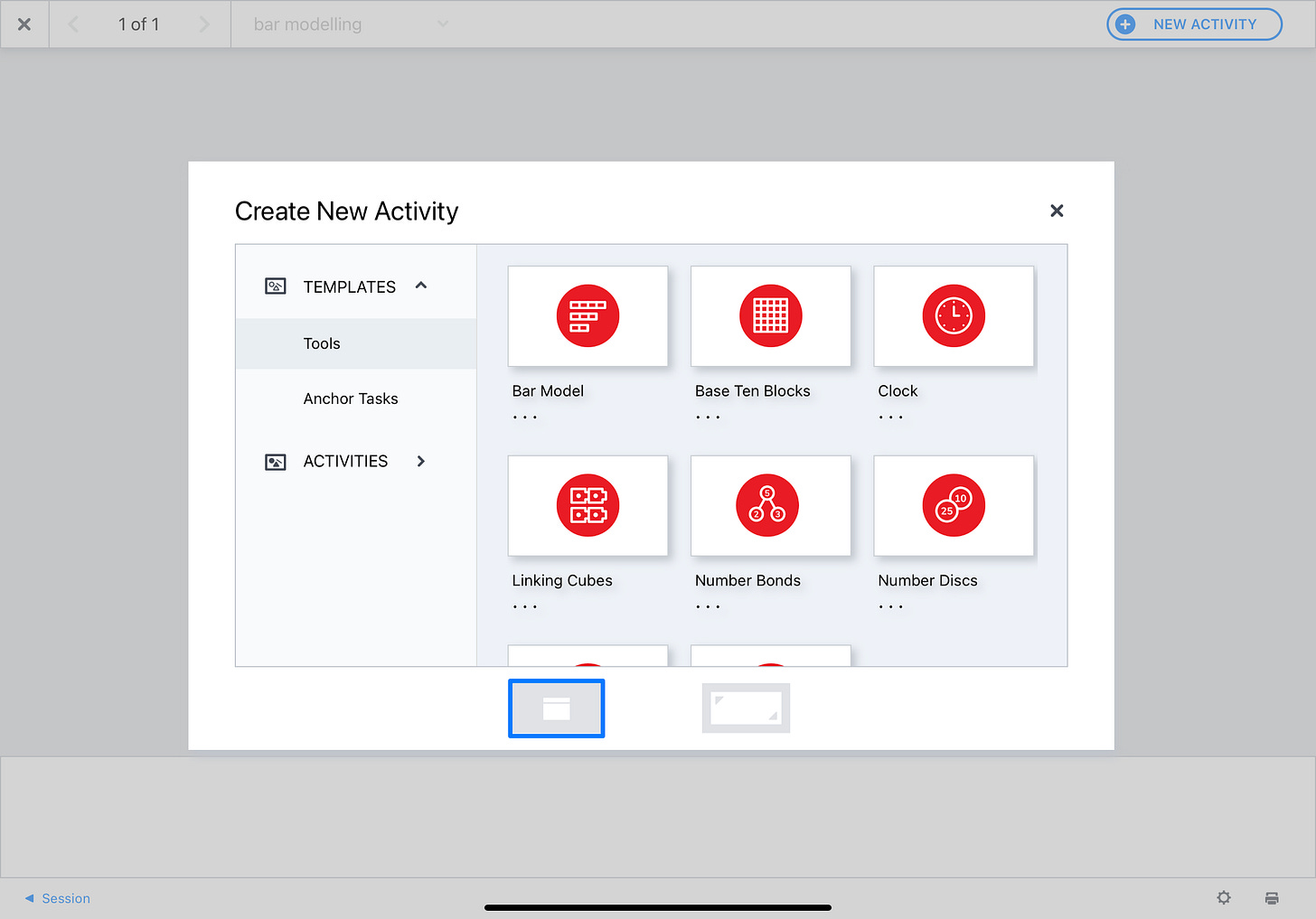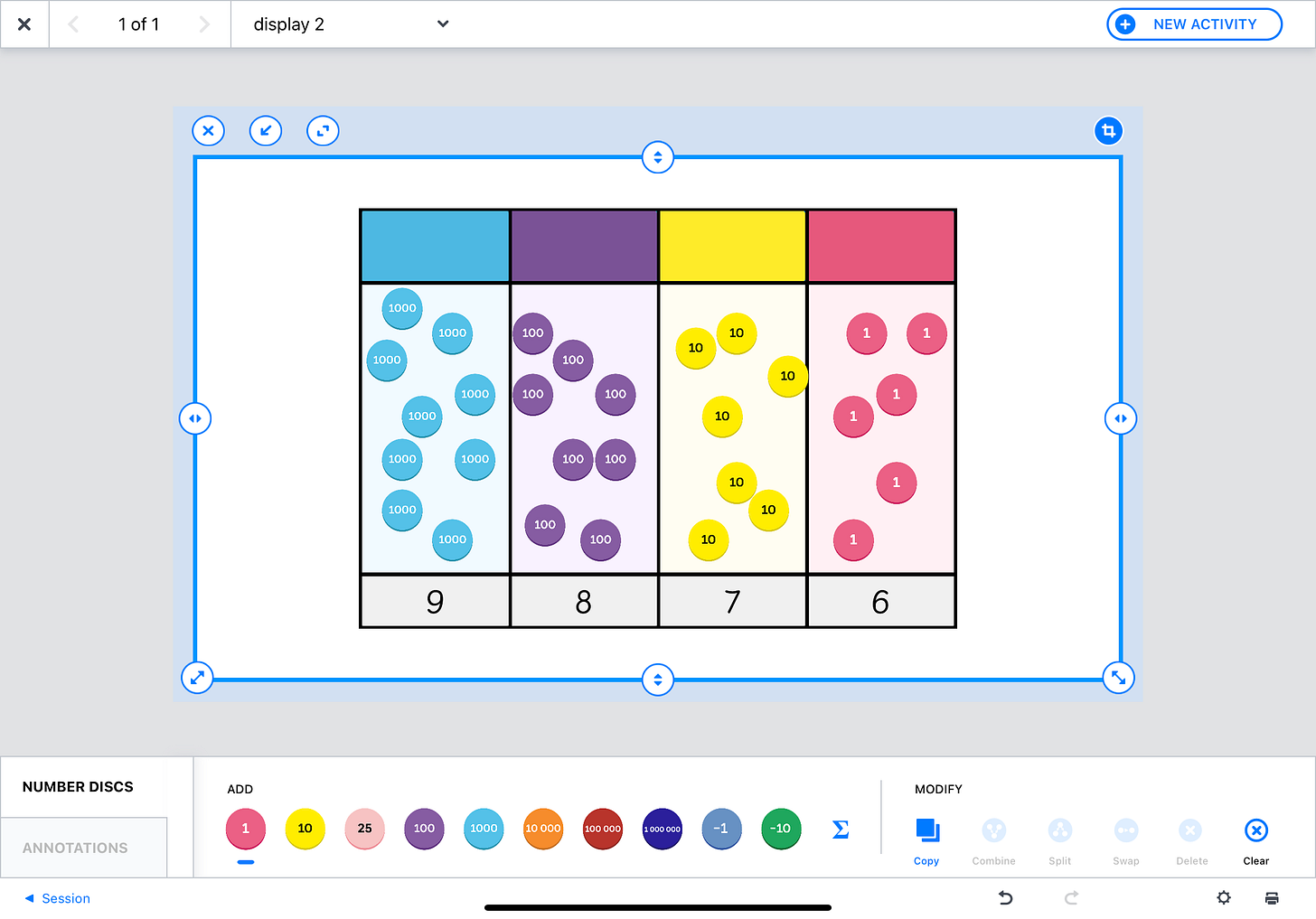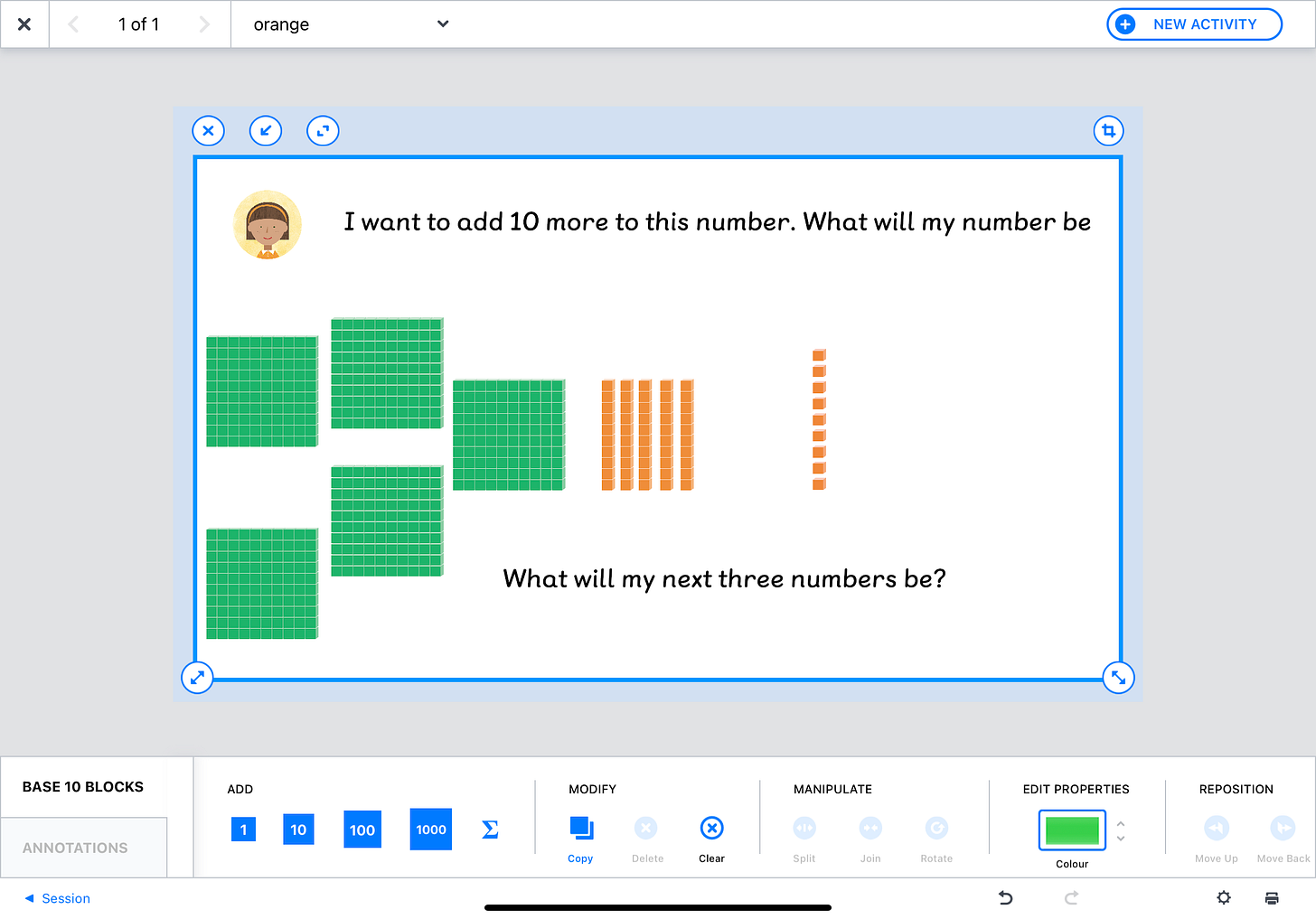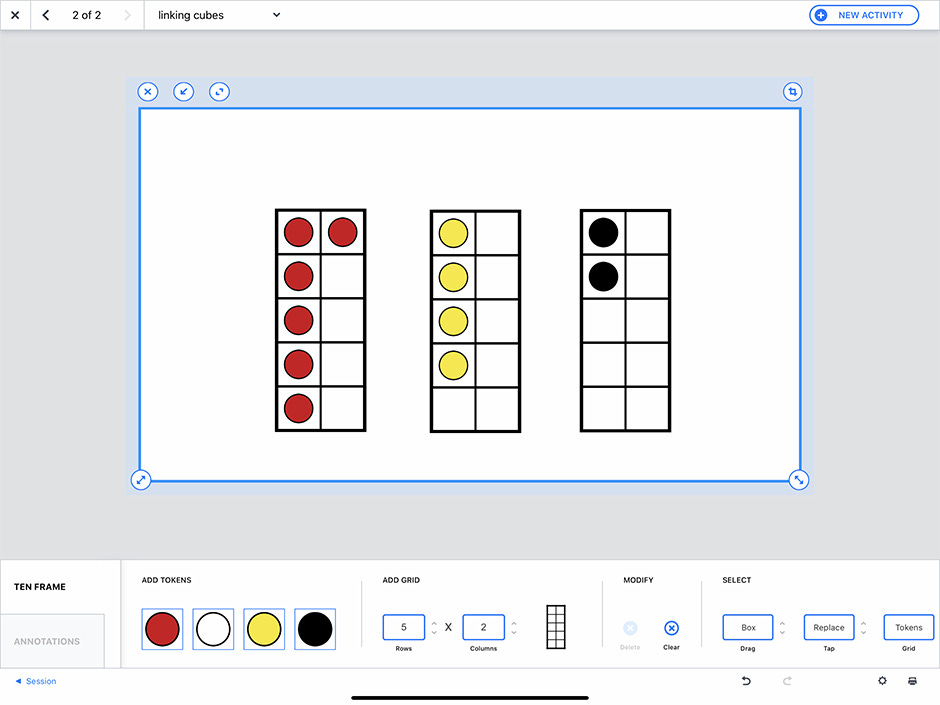Making Maths Visual and Accessible with Maths No Problem Visualiser App
Empowering Maths Education with Interactive Visual Tools
As a teacher, finding ways to make abstract mathematical concepts more concrete and accessible to your students can be a challenge. That's why I was so excited to discover Maths No Problem Visualiser - an app that transforms your whiteboard into a powerful tool for visualising mathematical concepts. And the best part? It's completely free!
Modelling with Ease
One of the key features of Maths No Problem Visualiser is the ability to model Maths concepts with ease. With its collection of visual aids, including dienes, number discs, place value charts, bar modelling, part-whole model, ten frame, clock, and more, I can easily model complex mathematical concepts to my students. This tool helps me to provide a visual representation of abstract mathematical ideas, making it easier for students to understand. The visualiser provides a blank canvas for you to bring your lessons to life. Here are just a few examples of how I've been using these tools to engage my students and support their learning:
Using Number Discs and Place Value Chart
Number discs are a great tool for showing place value, and I often use them in my lessons to demonstrate how the value of a number changes as it's broken down into units, tens, hundreds, etc. For example, when teaching the value of the digit in a number, I'll place the number discs on the place value chart and then ask the children to identify the value of each digit. This is a much more hands-on and interactive way of teaching the concept than simply writing it on the board.
Using the Bar Modelling
This tool helps students understand problem-solving and algebraic thinking, by breaking down complex problems into smaller, more manageable parts. For example, I've used the Bar Modelling Tool to create bar models that I can easily label, split, and fuse.
Using Dienes
Dienes blocks are a fantastic tool for demonstrating addition, subtraction, comparing numbers, ordering numbers and place value.
Understanding Place Value: To help my students understand the concept of place value, I modelled a 3-digit number using dienes. I showed them how each unit, ten and hundred could be represented by different colored dienes and how they fit together to form the number. This made the abstract concept of place value much more concrete and accessible to the students, and they were able to independently model numbers using dienes after just a few lessons.
Comparing and Ordering Numbers: I used dienes to help students compare and order numbers. By modeling numbers using dienes, students could easily see the difference between the tens, hundreds, and thousands and understand how this affects the overall value of the number. This made it easier for them to compare and order numbers, even up to 6-digits.
Using the Part-Whole Model
Another great tool for helping children understand math concepts is the part-whole model. I've used this tool to help students understand fractions, decimals and percentages. By showing the children how a whole can be broken down into parts, they can easily see the relationship between the two and understand how to work with fractions, decimals and percentages.
Using the Ten Frame
The ten frame is a great tool for helping children understand numbers and number bonds. I've used this tool in my lessons to help students understand place value and counting in tens. By filling in the ten frame with different numbers of objects, children can see how numbers can be broken down into tens and ones, making it easier for them to understand place value and counting.
Using the Clock
Teaching time can be difficult, but with the clock tool, it becomes a lot easier. I've used this tool in my lessons to help children understand the concept of time, how to read a clock and how to tell the time in different ways. By moving the hands on the clock and showing the children how it relates to real-world scenarios, they can easily understand the concept of time.
Not only does using these visual tools make mathematical concepts easier for students to understand, but it also saves valuable table space in your classroom that might otherwise be taken up by physical manipulatives.
Checking Understanding
In addition to using Maths No Problem Visualiser to model mathematical concepts, I've also been using it to check my students' understanding. By giving my students the tools to work with, I'm able to see their thought process and get a better sense of where they are in their understanding of a particular concept.
For example, during a guided session, I might ask my students to use the place value chart or number discs to demonstrate their understanding of a concept. This not only allows me to see how well they understand the concept, but it also gives them the opportunity to practice using the tools and build their confidence.
Real World Scenarios
Another great feature of the Maths No Problem Visualiser app is the Anchor Task feature. These fun, interactive tasks allow my students to apply their understanding of mathematical concepts in real-world scenarios. With each task, I have full control over the operation, level of difficulty, and outcome, so I can tailor the tasks to meet the needs of my students.
For example, I've used Anchor Tasks to help my students understand how to use money. I can choose a task that involves adding up coins to pay for items in a store, and my students can use the app's images of coins to model the problem. This helps my students see the relevance of what they're learning and makes the lesson more enjoyable.
Teach with Confidence
The Maths No Problem Visualiser app has a variety of other features that make it a must-have tool for any maths teacher. The app stores all of your files in a dashboard, so you never have to worry about losing a worksheet again. You can also present lessons by connecting the app with your classroom setup, and it works with projectors, in-classroom digital displays, and interactive whiteboards. Plus, the app supports wireless streaming through Apple TV, so you can teach from the comfort of your own home.
In addition, the app makes it easy to collaborate with colleagues. You can share your lessons with other Maths No Problem Visualiser app users, so they can teach it too. This is especially helpful when you're looking for new ideas or want to get feedback on your lessons.
Give it a Try
Whether you're a seasoned veteran or a new teacher, Maths No Problem Visualiser is an incredibly useful tool that can help you make maths more accessible and engaging for your students. With its wide range of tools and real-world scenarios, it's a must-have for any teacher looking to enhance their maths lessons.
And remember, it's completely free! So what are you waiting for? Give it a try today and see for yourself how Maths No Problem Visualiser can transform your maths lessons. To find out more visit:
https://mathsnoproblem.com/en/products/visualiser-app/
Thank you for tuning into The Connected Classroom! I hope this newsletter has provided valuable insights and practical examples for using EdTech tools.I believe that technology has the power to enhance and transform education, and I’m excited to share that with you. If you have any questions or suggestions, please don't hesitate to reach out. Thank you again for being a part of The Connected Classroom community.












